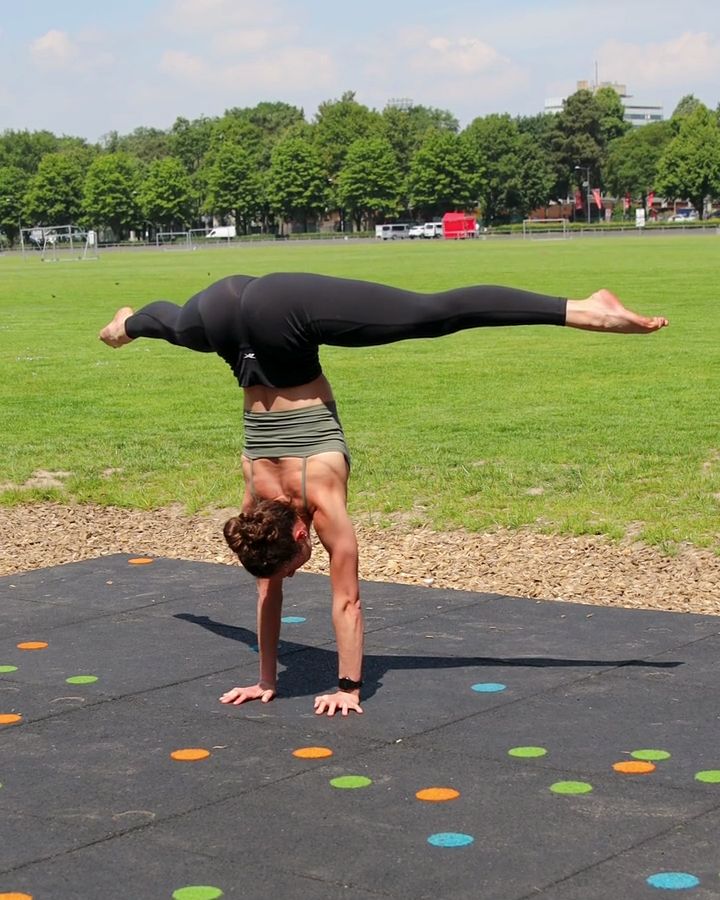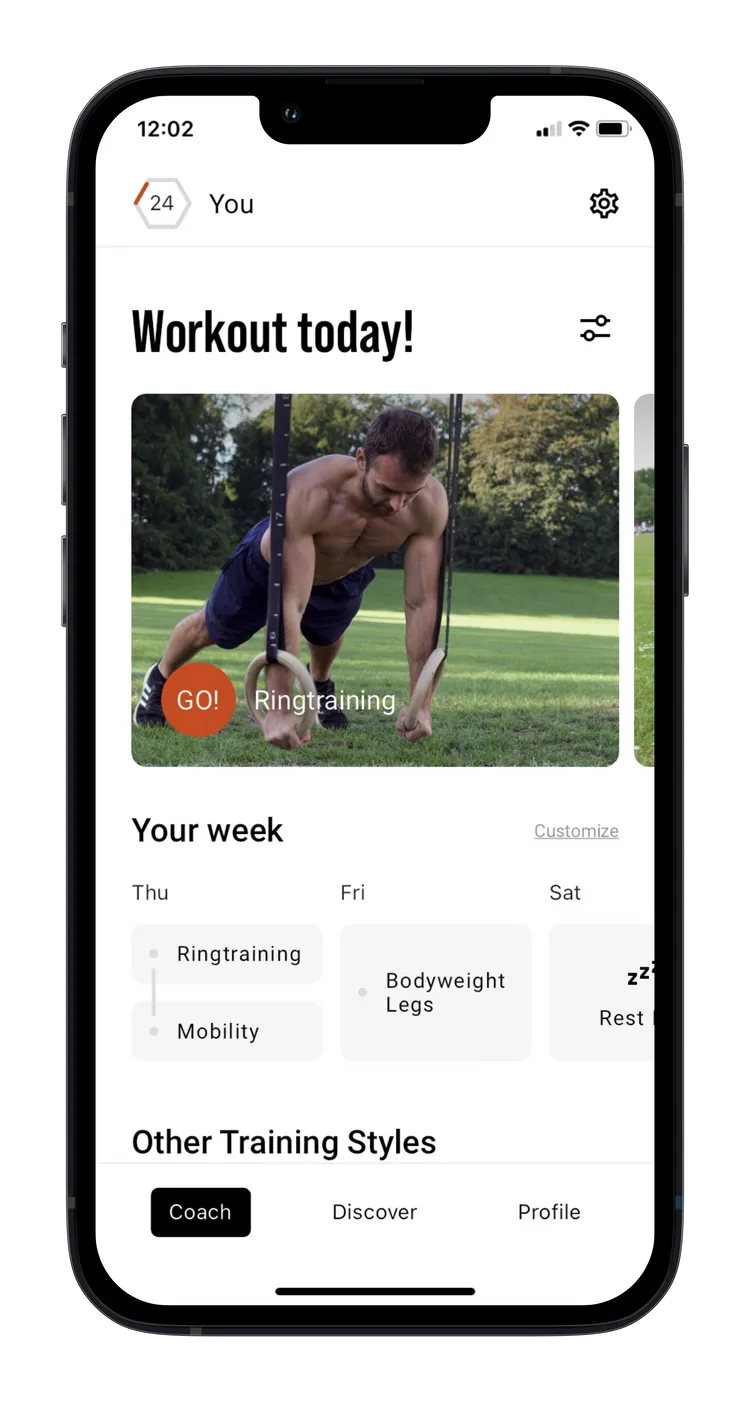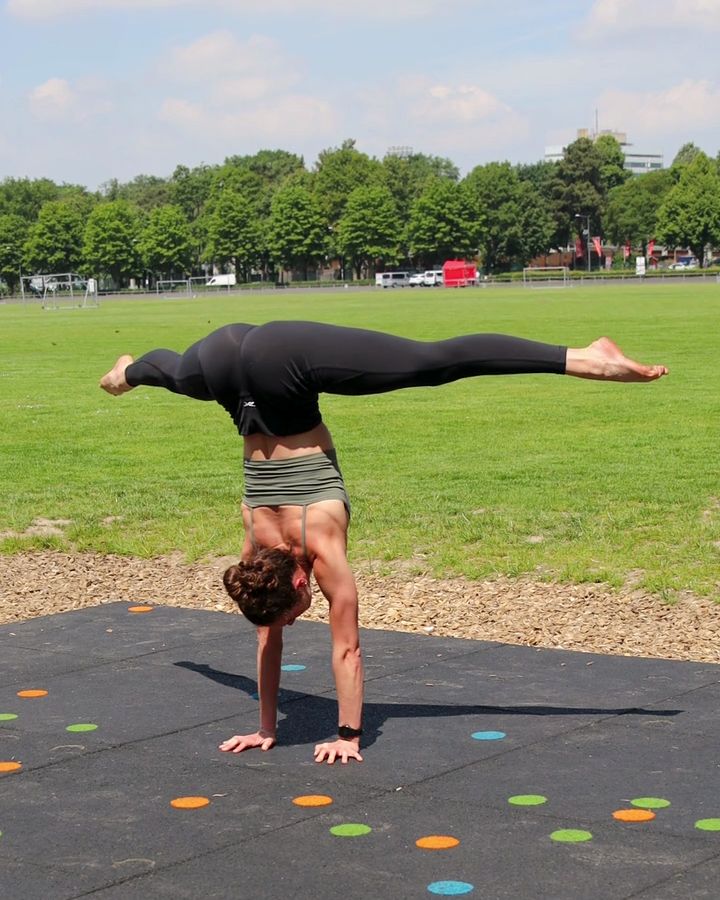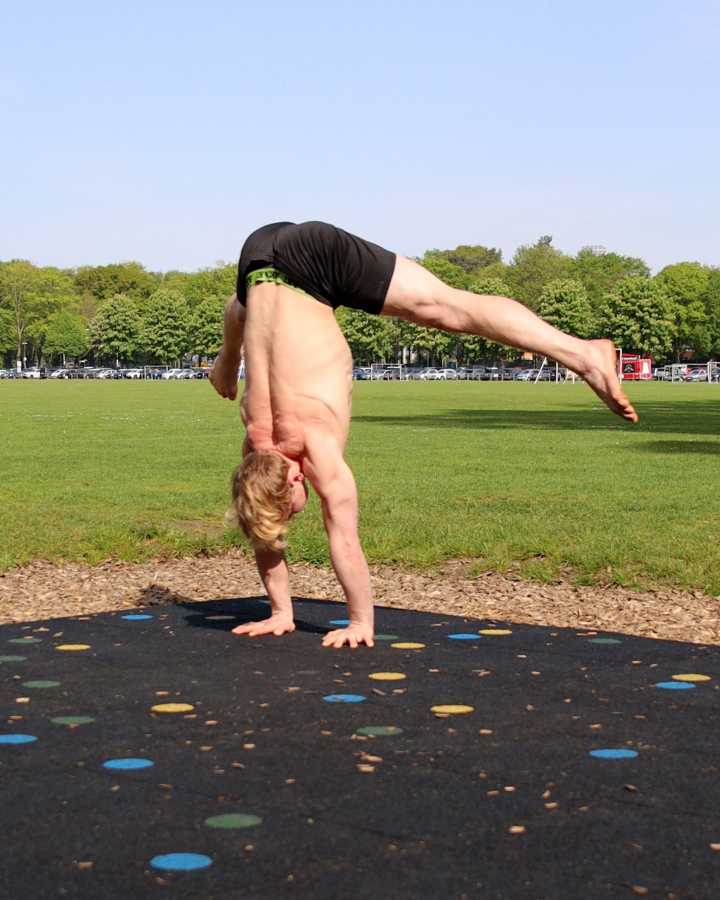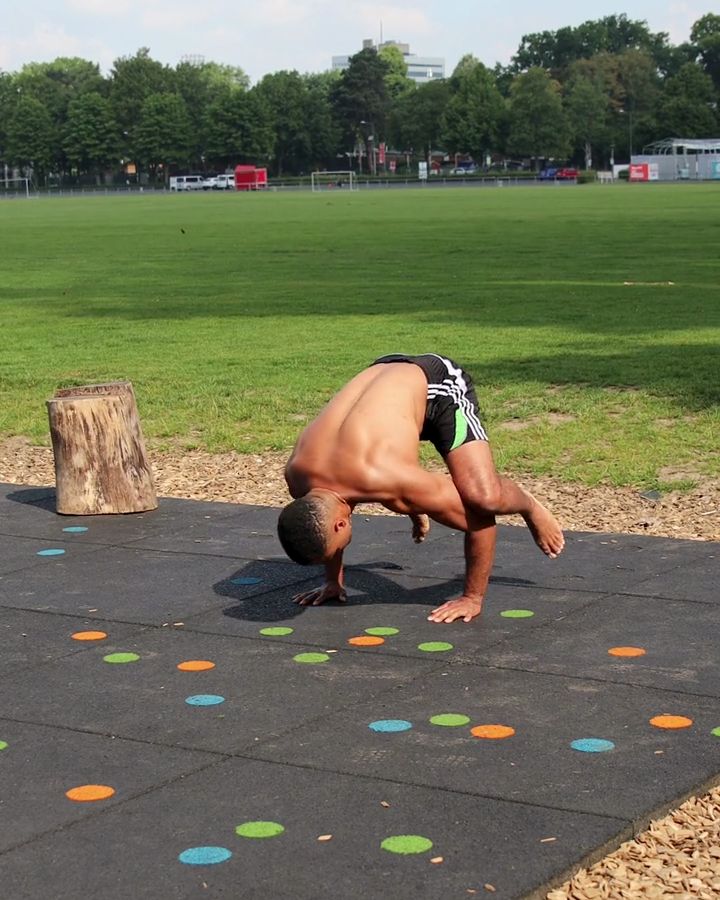Straddle Handstand
A straddle handstand is a handstand variation where the legs are spread apart in the air. It can be argued that this form of handstand is easier to balance than the handstand with closed legs, as spreading the legs lowers the body’s center of gravity. A lower center of gravity, closer to the ground, makes balancing easier because small adjustments in position have less impact on stability.
The straddle handstand serves as a foundation for advanced handstand exercises like the Straddle Press Handstand.
Beginners can practice the straddle handstand with support from a wall or a spotter to develop a safe sense of balance.
Straddle Handstand - the correct execution
- Start in heel seat with hands spread and arms stretched out
- Shift your weight forward and jump up into a handstand
- Spread your legs as wide as possible
- Make sure your arms are stretched out and your torso is tense
- Hold the handstand as long as possible
- If you have jumped off too much and overturn, dissolve the handstand as in the last video.
The exercise Straddle Handstand is intended to be used as a technique exercise.
Which muscles are trained by Straddle Handstand?












Primary trained muscles for Straddle Handstand
Upper Back - The muscles in the upper back, including the trapezius and rhomboid muscles, help move and stabilize your shoulders. They pull the shoulder blades together and support posture.
Secondary trained muscles for Straddle Handstand
Triceps - The triceps brachii muscle is located at the back of your upper arm. It extends your arm at the elbow and also helps move the arm backward.
Side Delts - The lateral part of the deltoid muscle, also known as the lateral shoulder, is located on the outside of the shoulder. It is the main muscle responsible for lifting the arm sideways. The lateral shoulder is particularly active when the arm is extended away from the body, such as during lateral raises or lifting objects to the side. It plays a key role in arm abduction and shoulder stabilization.
Front Delts - The front part of the deltoid muscle, also known as the anterior shoulder, is located at the front of the shoulder. It is primarily involved in the forward movement of the arm, such as lifting the arm forward. It also assists in the internal rotation of the arm. This muscle is engaged in activities that involve lifting objects in front of the body or pushing forward.
Forearm - The forearm muscles are divided into flexors and extensors. The flexors bend your wrist, while the extensors straighten it.
Alternative variants of Straddle Handstand:
Straddle Handstand Ups
Handstand Straddle Ups refer to jumping into a straddle handstand from a squatting position. In this movement, you jump in a controlled manner into the straddle handstand and aim to hold it briefly. This handstand entry differs from the commonly known kick-ups into a regular handstand with closed legs, as the legs are spread into a straddle during the ascent.
Straddle Handstand Ups - the correct execution
- Start in heel seat with hands spread and arms stretched out
- Shift your weight forward and jump up into a handstand
- Spread your legs as wide as possible
- Make sure your arms are stretched out and your torso is tense
- Hold the handstand for 2-3 seconds
- Return to the heel seat in a controlled manner
- If you have jumped off too much and overturn, dissolve the handstand as in the last video.
Similar exercises to Straddle Handstand
Straddle Press Handstand
The Press Handstand is one of the most challenging ways to get into the Handstand. You start from a straddle position and pull your legs past your body into the handstand. This exercise requires a high level of strength, flexibility, and stability in the handstand.
Crow / Frog to Handstand
The Crow to Handstand, also known as the Frog to Handstand, is a more challenging version of the Crow Pose because you push up from the Crow position into a handstand using the strength of your shoulders and arms. This transforms the balance exercise into one that requires significant upper body strength and is suited for advanced practitioners.
This could also be interesting
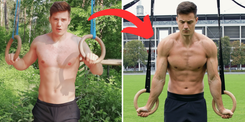
Calisthenics Body Transformation – How to Build a Strong, Lean, and Athletic Physique
Transform your body with Calisthenics! Build muscle, burn fat & achieve a shredded physique with bodyweight training. See real before & after results!

The Best Fitness Apps in 2025: Our Top 10 Recommendations
Don’t miss the best fitness apps of 2025: surprising favorites, free options, and perfect tools for your workouts. Find the ideal app today!
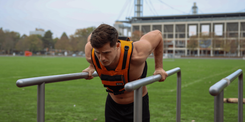
Complete Calisthenics Skills List – 40+ Exercises from Beginner to Pro
Which calisthenics skills should you learn first? And which ones will really help you progress? In this article, you’ll find a complete list of over 40 exercises – from the very basics to the toughest moves for professionals. Each exercise comes with instructions, so you can immediately integrate them into your training.
